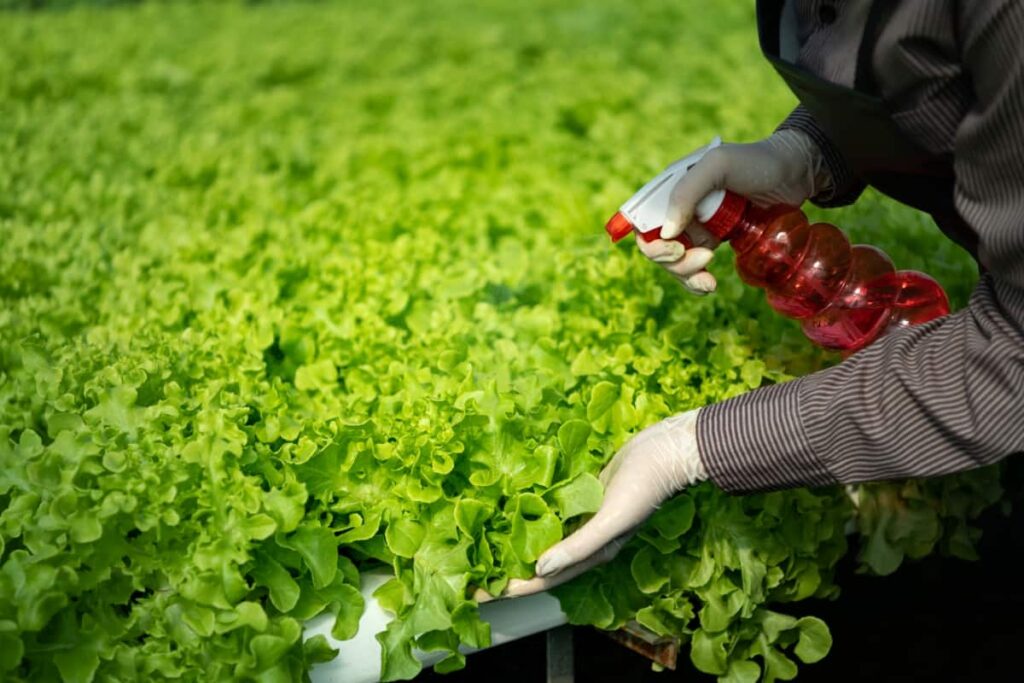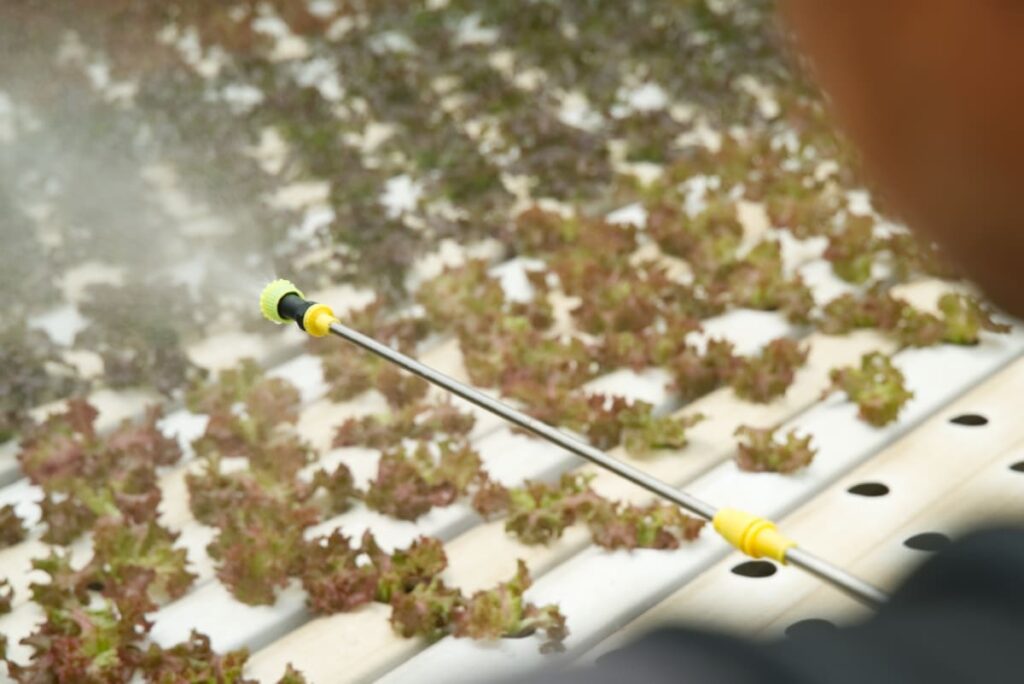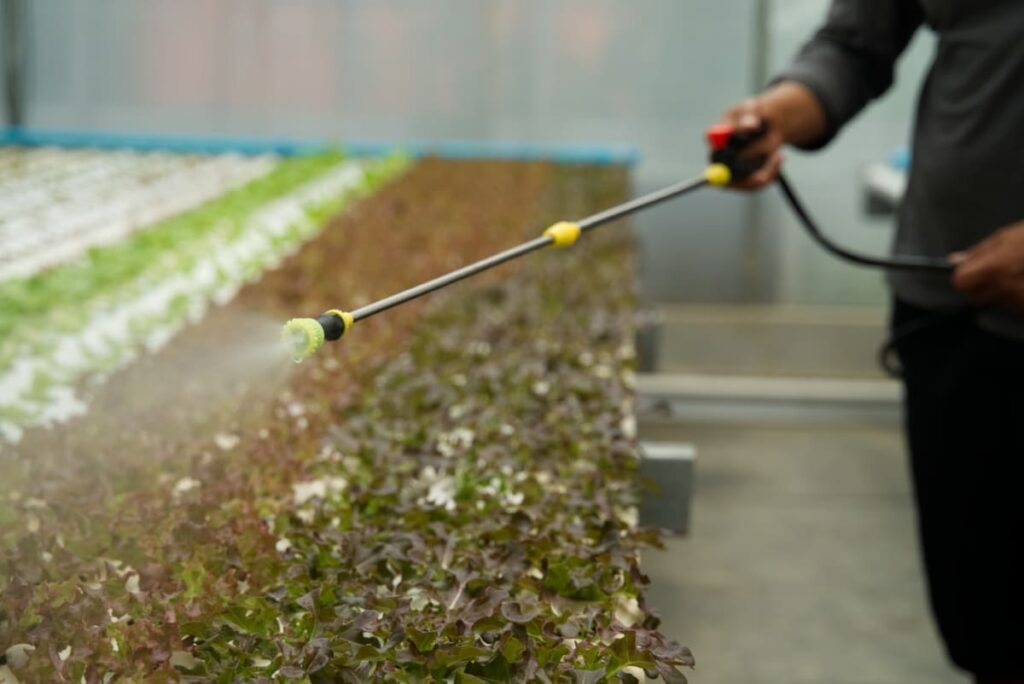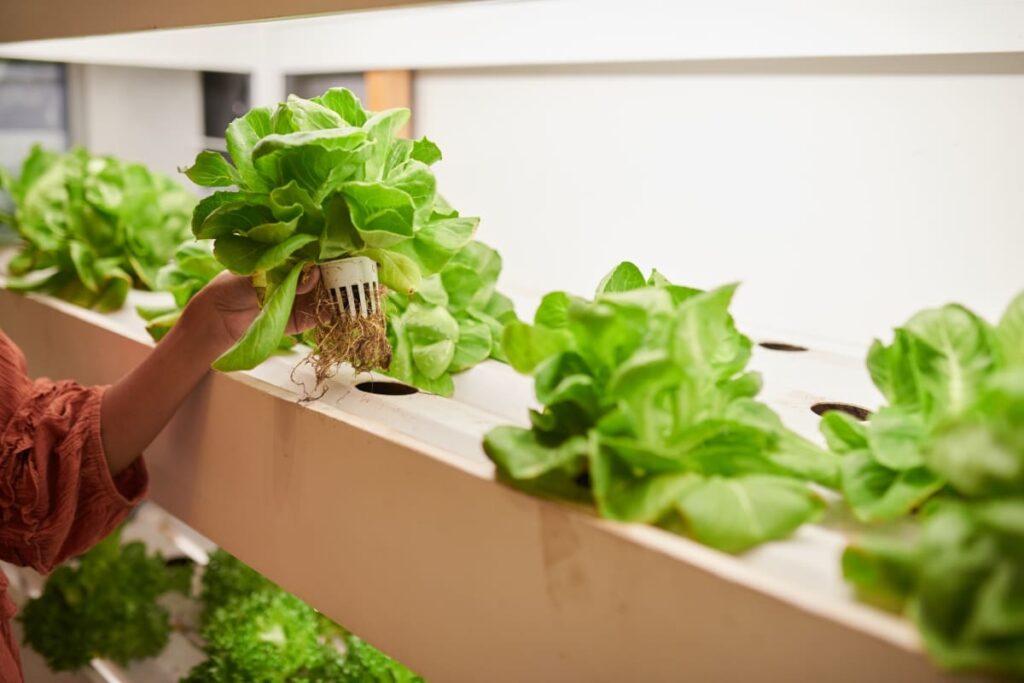By choosing organic methods for pest control in your hydroponic setup, you are not only ensuring the safety of your plants but also protecting the environment from harmful chemicals. Organic pesticides are natural sources such as plant extracts and essential oils, making them safe for consumption and environmentally friendly.

Hydroponic Homemade Organic Pesticides
Importance of Choosing Organic
Choosing organic methods promotes a balanced ecosystem within your hydroponic system. By opting for organic solutions, you create an environment where these helpful creatures can thrive alongside your plants. Utilizing hydroponic homemade organic pesticides offers numerous benefits when it comes to pest control in hydroponic setups.
Understanding Hydroponic System Needs
Assessing Your System
By assessing your system carefully, you can determine the most appropriate pest control methods to keep your plants healthy and thriving. Start by evaluating the hydroponic setup size and scale. Take into account other factors that may affect pest activity in your hydroponic system – such as temperature and humidity levels. Pests thrive in certain environmental conditions, so adjusting these factors can help prevent infestations before they occur.
Identifying Common Pests
The common pests that target hydroponic systems are aphids, thrips, and fungus gnats. To effectively address these challenges, it’s essential to regularly inspect your hydroponic plants for signs of infestation, such as distorted leaves or webbing. Implementing preventive measures like using sticky traps or introducing beneficial insects can help keep populations under control without resorting to pesticides.
Basic Ingredients for DIY Pesticides
Natural Ingredients List
These natural ingredients are commonly used and have proven effective in controlling pests without harming the environment or compromising the health of your plants. One popular ingredient is neem oil; it has insecticidal properties and can disrupt the life cycle of many common garden pests. It’s also safe to use around beneficial insects like bees and ladybugs.
Another key ingredient is garlic, known for its strong odor that repels pests like aphids and mites. Garlic can be blended with water to create a potent spray that deters unwanted visitors. Soap is another important component in homemade organic pesticides. The soap helps break down the protective coating on certain pests, causing them to dehydrate and die off.
Sourcing Quality Ingredients
- Local Nurseries and Garden Centers: Start by checking out local nurseries and garden centers in your area. These establishments carry a wide range of natural pest control products, including neem oil, garlic, and other essential ingredients.
- Organic Farm Supply Stores: Look for stores that specialize in organic farming supplies. They typically carry a variety of organic pesticides and natural ingredients suitable for hydroponic systems. Be sure to ask about their sourcing practices to ensure the highest quality products.
- Online Retailers: The internet is a great resource for finding specialized suppliers of organic gardening products. Look for reputable online retailers that offer certified organic options from trusted brands.
Equipment and Tools Required
DIY Preparation Kit: Firstly, you’ll need some sprayers. These can be handheld pump sprayers or even spray bottles with adjustable nozzles. The important thing is that they allow you to distribute your pesticide solution over your plants evenly. Next up, mixers are crucial for ensuring that all the ingredients in your pesticide blend properly. You’ll also need storage containers to keep your homemade pesticides safe and ready for use.
Safety Gear: Protective gear is essential to ensure that you are not exposed to any harmful substances during the process. Firstly, wearing gloves is crucial when handling any ingredients or mixing solutions. Another important piece of safety equipment is a mask or respirator.
Recipe 1: Neem Oil Spray
Ingredients and Step-By-Step Preparation
Neem oil is a popular natural ingredient for hydroponic homemade organic pesticides due to its effectiveness against a wide range of pests. To create your neem oil spray, you will need the following ingredients;
- Neem oil: This is the star of the show and acts as both an insecticide and fungicide.
- Liquid soap: Use a mild liquid soap that does not contain harsh chemicals or fragrances.
- Water: The main component for diluting the neem oil.
Now, let’s get into the precise measurements for this recipe. For every liter of water, you will need 5ml of neem oil and around half a teaspoon of liquid soap. Mix these ingredients until they are well combined. It’s important to note that neem oil can solidify at low temperatures, so it may be necessary to warm it slightly before mixing it with water. Always follow the instructions on your specific bottle of neem oil for best results.
In case you missed it: Hydroponic Nutrients Solution Recipe: DIY Homemade Hydroponic Fertilizer

Recipe 2: Garlic and Pepper Spray
Ingredients and Preparation Guide
- Fresh garlic cloves
- Red chili peppers or cayenne pepper powder
- Water
To prepare this potent spray, follow these ratios:
- 1 bulb of garlic (approximately 10 cloves) per gallon of water
- 3 to 5 red chili peppers (or 1 tablespoon of cayenne pepper powder) per gallon of water
Start by peeling and crushing the garlic cloves. Then, chop up the chili peppers if you’re using them instead of the powdered form. Next, add the crushed garlic and chopped peppers to a pot filled with one gallon of water. Please bring the mixture to a boil over medium heat. Once boiling, reduce the heat for about twenty minutes.
This will help extract all those beneficial compounds from both the garlic and peppers. After simmering, remove the container from heat and allow it to cool down completely. Once cooled, strain out any solid particles using cheesecloth or a fine mesh strainer. Then, you’ve successfully prepared your very own garlicky-peppery pesticide spray that will keep those pesky critters at bay.
Recipe 3: Soap-Based Pesticide
Choosing the Right Soap and Mixing Instructions
When it comes to making your soap-based pesticide for your hydroponic system, choosing the right type of soap is crucial. Castile soap is made from vegetable oils. It contains no synthetic additives or harsh chemicals, making it safe for both your plants and the environment. When selecting a castile soap for your hydroponic homemade pesticide recipe, opt for an unscented variety without any added dyes or fragrances.
These additives can potentially harm your plants or interfere with their growth. To use castile soap in your DIY pesticide preparation, follow the mixing instructions carefully. Combine the appropriate amount of water with a small quantity of liquid castile soap according to the recommended ratios provided in your recipe.
Application Techniques
When to Apply
The best time of day to apply these organic pest control solutions is early morning or late afternoon when the temperature is cooler, and the plants are less stressed. This helps to minimize any potential harm caused by spraying during hot, sunny hours.
Application Methods
One common method is spraying the pesticide directly onto the leaves of your plants. This allows the pesticide to come into direct contact with any pests that may be present on the foliage. Another application method involves directly applying the pesticide to the soil or roots of your plants. This can be done by mixing the pesticide solution with water and then pouring it into your hydroponic system’s reservoir or drip irrigation system. The roots will absorb the pesticide, providing systemic protection against pests.
In case you missed it: Hydroponics in Urban Apartment Gardening: Benefits and How to Set Up Guide

Safety and Precautions
Handling and Storage
It is important to wear protective gear when preparing or applying pesticides. This may include gloves, goggles, long sleeves, and pants. These precautions can minimize exposure to potentially harmful substances. Always read and follow the instructions provided with the pesticide recipe carefully. Additionally, proper storage of organic pesticides is crucial for maintaining their efficacy over time.
Monitoring and Maintenance
Observation and Adjustment
Regular observation allows you to stay one step ahead of any potential pest activity while also providing an opportunity to adjust your pesticide use as needed. By closely monitoring your hydroponic setup, you can quickly identify any signs of pests, such as leaf damage or wilting plants. This early detection enables you to take immediate action before the infestation spreads and causes significant harm to your crops.
In case you missed it: Exploring the Potential of Hydroponic Farming in the Philippines

Conclusion
Using homemade organic pesticides ensures that you are minimizing your exposure to harmful chemicals. Making your hydroponic organic pesticide solutions is cost-effective compared to purchasing commercial products. Many of the ingredients needed can be found easily or even grown at home, allowing you to save money by achieving excellent results.
- Budget Friendly Sheep Shed Ideas: Cheap and Low-Cost Tips
- How Much Do Cattle Farmers Make: Revenue Streams in Cattle Farming
- Management Pests and Diseases in Your Cotton Field
- Sheep Farming Business Plan for Beginners
- Aquaponic Farming at Home: A Step-By-Step Guide
- Profitable Village Farming Business Ideas in 2024
- High-Yield Aquaculture: Fast-Growing Fish for Farming
- Effective Fish Pond Construction Techniques for Beginners
- Irrigation and Water Management in Pineapple Farming
